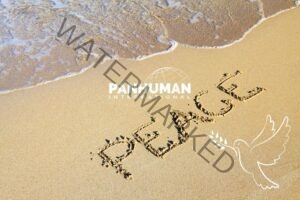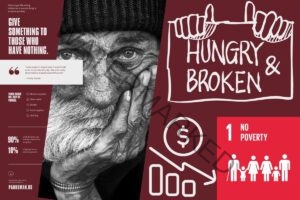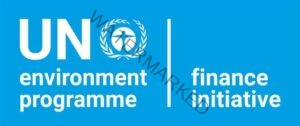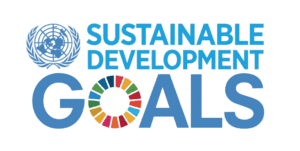 The global campaign for peace and disarmament represents an urgent call to address one of humanity’s most enduring challenges: how to live together in a secure, inclusive world free from the threat of armed violence. This mission aligns closely with the Sustainable Development Goals (SDGs), which illustrate that peace, security, and development are interconnected. Weak institutions and rampant proliferation of weapons undermine both the security of states and the welfare of communities, highlighting a critical need for disarmament and arms control on a global scale.
The global campaign for peace and disarmament represents an urgent call to address one of humanity’s most enduring challenges: how to live together in a secure, inclusive world free from the threat of armed violence. This mission aligns closely with the Sustainable Development Goals (SDGs), which illustrate that peace, security, and development are interconnected. Weak institutions and rampant proliferation of weapons undermine both the security of states and the welfare of communities, highlighting a critical need for disarmament and arms control on a global scale.
The Link Between Security, Development, and the SDGs
The Sustainable Development Goals illustrate that sustainable development cannot exist in isolation from global peace and security. Fragile institutions, exacerbated by uncontrolled arms proliferation, destabilize societies, stalling development and making it nearly impossible for communities to thrive. Security, when underpinned by effective disarmament strategies, strengthens state resilience, fosters economic stability, and ensures basic human rights. Each weapon taken off the streets, each control measure introduced, and each community that embraces peace over violence builds toward the realization of SDGs, as sustainable development is fundamentally incompatible with the widespread presence of arms.
The Impact of Arms Proliferation on Key SDGs
The unchecked proliferation of weapons has far-reaching consequences, impacting various aspects of human life, nature, and governance. This escalation of arms compromises multiple SDGs, highlighting the necessity of robust disarmament efforts. Some of the SDGs that are directly affected by arms proliferation include:
Peace, Justice, and Strong Institutions (SDG 16): Weapon proliferation is often rooted in weak institutions, where corruption, inadequate regulation, and a lack of resources lead to increased violence and insecurity. By enforcing disarmament policies, societies can promote justice, build stronger institutions, and create inclusive, peaceful communities that foster trust between citizens and the state.
Reduced Inequalities (SDG 10): Armed conflict and violence disproportionately affect marginalized communities, often widening socio-economic gaps. Weapons escalate violence in impoverished areas, disrupt local economies, and displace families, compounding inequality. Disarmament efforts can play a pivotal role in narrowing these divides, enabling societies to better address and reduce inequality.
Economic Growth (SDG 8): Violence and armed conflict impose tremendous costs on the global economy, draining resources that could otherwise fuel job creation, healthcare, education, and infrastructure. Disarmament initiatives redirect resources from military spending toward social and economic development, encouraging economic growth and stability.
Good Health and Well-being (SDG 3): Weapons-related violence leads to direct physical harm, causes psychological trauma, and disrupts essential health services. Disarmament reduces both the direct threat of injury and the secondary health impacts of violence, helping communities to focus on health and wellness rather than recovery from armed conflict.
Gender Equality (SDG 5): Armed violence disproportionately affects women and children, with women often becoming targets of gender-based violence in conflict situations. Arms control and disarmament directly contribute to reducing these threats, supporting the creation of safe, gender-equal environments where women are empowered to participate fully in society.
Sustainable Cities and Communities (SDG 11): Armed violence undermines efforts to build sustainable, resilient cities, creating environments where people feel unsafe, and development is halted. Disarmament supports safe, inclusive cities, enabling urban communities to thrive and contribute to sustainable development.
Disarmament as a Path to Sustainable Peace and Development
The indicators within SDG 16 emphasize how disarmament and arms control contribute to building peaceful societies and strong institutions. These indicators guide nations to prioritize the control of arms flows and address unregulated markets. When communities prioritize arms control, they take a vital step toward safeguarding lives, restoring trust in governance, and enabling economic and social growth. Additionally, by ensuring justice and legal systems are transparent and enforce arms regulations, nations can foster environments where citizens are protected, and sustainable development flourishes.
Key Actions to Promote Global Disarmament and Peace
To achieve global peace and sustainable development, a comprehensive approach to disarmament is essential. Key actions include:
Strengthening International Arms Agreements: The world must reinforce existing frameworks such as the Arms Trade Treaty and invest in stricter compliance, ensuring that arms transfers do not fall into the hands of individuals or groups likely to perpetrate violence.
Investing in Local Peacebuilding Efforts: Communities must be empowered to address their unique challenges around arms control. Education programs, community engagement, and local governance reforms play a crucial role in reducing violence and promoting peace.
Integrating Disarmament into Development Policies: Development strategies should include disarmament as a core component. Nations can prioritize funding for health, education, and poverty alleviation over military spending, creating a more sustainable path to security.
Promoting Transparency in Arms Trade: By increasing transparency in arms transactions, states can reduce illegal arms flows and prevent them from fueling conflict zones, promoting accountability and peace.
A Global Call for Peace
Disarmament is not simply an end but a means to sustainable development, economic prosperity, and social well-being. A future where communities are safe, where institutions are strong, and where the global community upholds the principles of peace and justice is possible. Through collective efforts to reduce weapon proliferation, strengthen institutions, and invest in development, we can address the root causes of violence and build a safer, more inclusive world for all.
It is time for the world to unite under the cause of global peace and disarmament, reinforcing the foundation on which all other sustainable goals can thrive. This vision is achievable but requires sustained commitment, collaboration, and decisive action on a global scale. Peace and security are not privileges—they are the foundation of humanity’s collective future. Together, we can make that future a reality.
PANHUMAN INTERNATIONAL: For Peace. For Humanity. For Progress.



 The global campaign for peace and disarmament represents an urgent call to address one of humanity’s most enduring challenges: how to live together in a secure, inclusive world free from the threat of armed violence. This mission aligns closely with the Sustainable Development Goals (SDGs), which illustrate that peace, security, and development are interconnected. Weak institutions and rampant proliferation of weapons undermine both the security of states and the welfare of communities, highlighting a critical need for disarmament and arms control on a global scale.
The global campaign for peace and disarmament represents an urgent call to address one of humanity’s most enduring challenges: how to live together in a secure, inclusive world free from the threat of armed violence. This mission aligns closely with the Sustainable Development Goals (SDGs), which illustrate that peace, security, and development are interconnected. Weak institutions and rampant proliferation of weapons undermine both the security of states and the welfare of communities, highlighting a critical need for disarmament and arms control on a global scale.








